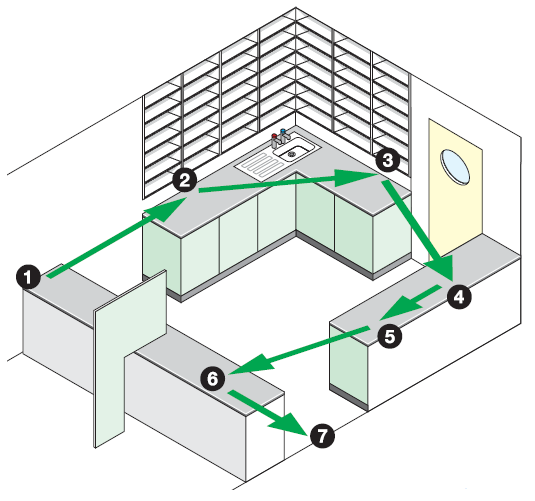 From the customer's perspective, your pharmacy workflow is pretty much all about the speed and accuracy of your prescription filling results. It's not an uncommon complaint for a client coming into a pharmacy for a prescription fill to wonder, especially when they're the only customer at the drug counter, why it still takes 20 minutes (or sometimes longer) to receive their order. If it's a brand-new prescription or the person is a new customer in that pharmacy, the wait time is more easily understandable. But for a refill? Even if it's just the process of putting a new label on an already packaged medicine, without even any counting out of pills required, that 20 minutes seems more of a rule than an exception in many drugstores, especially the big chain pharmacies.
From the customer's perspective, your pharmacy workflow is pretty much all about the speed and accuracy of your prescription filling results. It's not an uncommon complaint for a client coming into a pharmacy for a prescription fill to wonder, especially when they're the only customer at the drug counter, why it still takes 20 minutes (or sometimes longer) to receive their order. If it's a brand-new prescription or the person is a new customer in that pharmacy, the wait time is more easily understandable. But for a refill? Even if it's just the process of putting a new label on an already packaged medicine, without even any counting out of pills required, that 20 minutes seems more of a rule than an exception in many drugstores, especially the big chain pharmacies.
Consider the following:
One of the main things your customers wish you knew about pharmacy workflow is how to make it work more to their advantage. They may be unaware of the fact that much of your workload arrives from call-ins or prescription orders sent via computer, and when someone comes to the store in person they may be falling into a substantial queue that, although invisible to them, is still based on a first come first served basis. They would probably appreciate it if you explained that you'll get to their order as soon as possible but that there are X-number of fills in the line ahead of them.
No Pharmacy Workflow is Perfect
No matter how formalized a workflow you've established, there are always unforeseen interruptions that will typically occur. When the phone rings, it has to be answered, for example, meaning that someone will need to interrupt the task they're doing to handle it. What your customers wish is that your pharmacy workflow included a dedicated individual for answering phones and dealing with will-call orders that customers are coming in to pick up. Otherwise, a tech who may be putting their order together will have to stop what they're doing to answer the phone and take care of that situation or handle the will-call order pickup.
It's accepted that doctors' handwriting is often difficult to decipher and it's also not uncommon for a doctor's prescription to contain mistakes in drug names, dosage requirements, etc. When these things happen, it's important for not only the pharmacy techs to be on their toes at the intake stage of the workflow but the pharmacist may also need to get involved, especially if the drug being called for is suspect. Another critical step in filling a prescription, especially for a new patient or for a new medicine, is to cross-check for drug allergies and possible negative drug interactions between multiple medications being taken by an individual.
What Clients REALLY Want
Studies have shown that one of the biggest draws community pharmacies have to their loyal customers is excellent, personalized service. Your customers wish you would treat them the same way you'd like to be treated were your roles reversed, and customer-centric pharmacy staff members to just this.
They may not know exactly what goes on in the back end of your pharmacy, but your customers wish your pharmacy workflow would view them as important to your financial success (which they are). They want your system to recognize them by sight and by name and not ask them redundant questions at the drop-off counter when they're already firmly established in your records.
Your workflow is established for the benefit of your customers who are critical to your financial survival. Be sure to show your appreciation!




